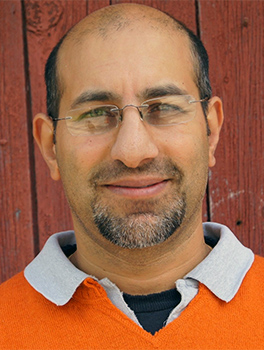You feel like you’re floating or flying, or you have a hyper-awareness to light, smell and sound − that perception of an altered state of consciousness is a result of increases in the brain’s signals and activity, according to a new study by York University psychology researchers.

“We have a hint that there could be brain modulations that induce someone to get into a trance state through training,” says Psychology Professor Joseph DeSouza. “Our results show how, when a person thinks they are in an altered state, their brain activity actually changes. No one has been able to show this in consciousness studies. This is our first step toward scanning what is happening in the brain during trance.”
DeSouza, a member of York University’s Centre for Vision Research, former postgraduate student Rebecca Rogerson, and postdoctoral researcher Rebecca Barnstaple, conducted the study published in Brain Sciences.
During the study, the brain was scanned while the subject was in a trance state and the scan showed alterations in brain signals. The researchers found that regions in the brain were activated through music to induce this altered state of consciousness (ASC).
This is the first study to show heightened levels of brain activity in relation to perception of an altered state of consciousness − specifically trance − the researchers say. The findings may help shed light on how attention, volition, activation, and/or suppression of neural networks can play a role in consciousness.
In the research, researchers scanned the brain over eight minutes while the subject listened to five minutes of trance-inducing music. The subject was observed to be in a trance state for two to five minutes and data from brain activation in both the auditory and orbitofrontal cortex were collected. Specific areas in the brain showed heightened modulations, including auditory (sound) and orbitofrontal. During the scan, the subject reported feeling physical sensations of tingling fingers, nausea and a hyperawareness to light, odour and sound normally associated with entering trance, saw their body flying or floating above an unknown locale and the subject also reported rapid fluttering of the eyelids, increased breathing and an ecstatic feeling or sensation.
An altered state of consciousness can change how the brain works by diverting blood flow from the front of the brain to other areas. Other common experiences that create altered states of consciousness are sleeping or daydreaming, sleep deprivation, euphoria or panic. Previous research has shown that meditation and hypnosis are other methods that can induce an altered state of consciousness and reduce stress and anxiety.
In some cultures, traditional healers are practitioners of ancient spiritual healing who commonly enter a trance state through fast rhythmic drumming techniques. During a trance state, the brain is able to suppress external stimuli such as sounds. Despite the long history of trance by traditional healers, little is known about what happens in the brain and neural correlates.
DeSouza says that a task-specific brain network is created when these individuals train to become traditional healers, similar to those observed in professional musicians or dancers.
“Brain plasticity is achieved through training the brain and now can be seen in our study during an altered state of consciousness. This is a one-subject case study and needs to be replicated by our group and others.”
Courtesy of YFile.
